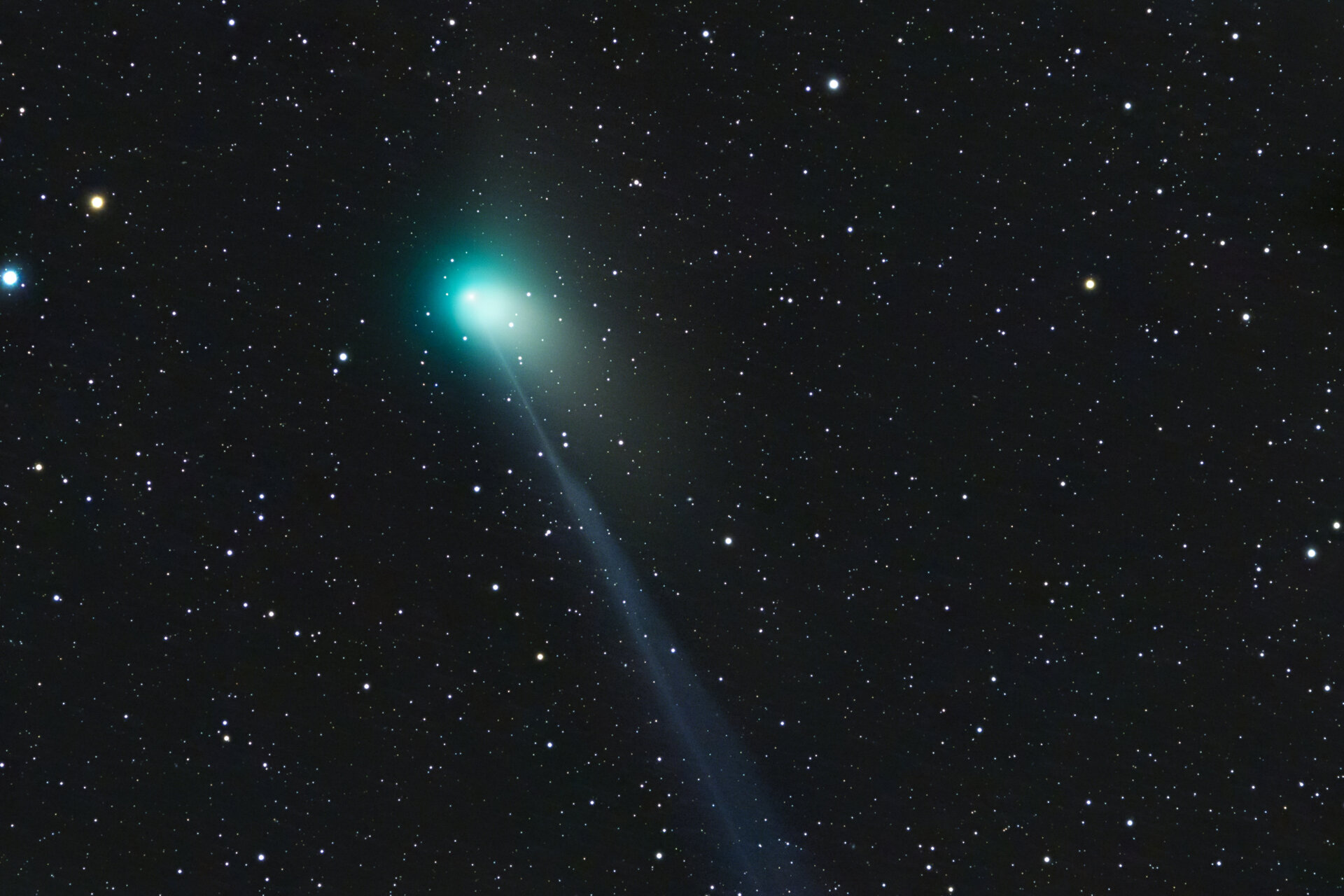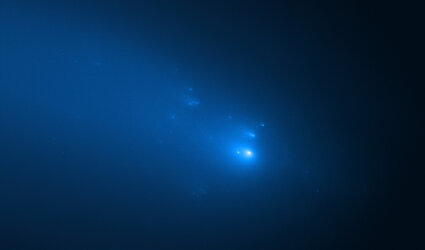

Comet ZTF and its apparent three tails
Comet ZTF stuns in this image taken two weeks before its Earth close approach, on 19 January 2023.
Look closely, and you’ll spot that comets have two tails, one made of ionised gas and another of dust. As a comet approaches the inner Solar System, solar radiation causes volatile materials within the comet to vaporise into gas and stream out of the nucleus – the comet’s ‘head’ – carrying dust away with them.
In the dust tail, large grains scatter the sun’s light in all directions, some of which is detected by cameras and telescopes on Earth – like the moon and planets.
In the ion tail, molecules are much smaller but glow through a process called ‘fluorescence’: ionised atoms and molecules in the gas are struck by photons of light which they absorb, becoming ‘excited’. They then spontaneously re-emit photons at another wavelength, in a different colour, depending on the molecule.
Comet ZTF's bright green glow reveals the dominant chemicals it is made up of, with dicarbon dominating emissions in this part of the visible spectrum.
“The two tails point in slightly different directions because the forces act on dust and ions in different ways. While the larger dust particles are pushed by pressure from sunlight, the ions are much lighter and electrically charged so are easily carried by the solar wind and its magnetic field.,” explains Jorge Amaya from ESA’s Space Weather Office.
“Recently, a strange phenomenon has occurred with comet ZTF as it appears to have a third tail. This is, in fact, an optical illusion, due to our point of view of the dust trail.”
Thanks to Astronomer Óscar Martín for this stunning photo.





